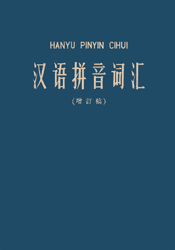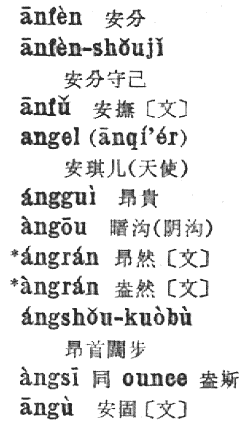 Today, for all you orthography junkies (Hello? Hello? Anybody there?), I have added a selection from the 1963 edition of Hanyu Pinyin Cihui (汉语拼音词汇 / Hànyǔ Pīnyīn Cíhuì).
Today, for all you orthography junkies (Hello? Hello? Anybody there?), I have added a selection from the 1963 edition of Hanyu Pinyin Cihui (汉语拼音词汇 / Hànyǔ Pīnyīn Cíhuì).
The book, which is fully alphabetized by Hanyu Pinyin (i.e., like the ABC dictionary series, not like the Hanzi-by-Hanzi Pinyin ordering seen in most dictionaries published in the PRC), is a long list of Mandarin words as written in Hanyu Pinyin and Chinese characters. It’s meant as a reference for word division and other such orthographic concerns. It’s the sort of thing that just cried out to have been made into a full dictionary (especially since that’s what it looks like, minus definitions); but, unfortunately, it never was. But it was an important influence on the ABC series.
One can see some interesting instances of differences between Pinyin orthography then and now. For example, in this old edition of Hanyu Pinyin Cihui de tends to be appended to words and written as d, e.g. ái’áid, rather than the current ái’ái de (皚皚的). Similarly, zi is written z at the end of a word, e.g. ǎigèz, rather than the current ǎigèzi (矮个子).
Also interesting is the mixed use of simplified and traditional Chinese characters. (It will be easier to see what I’m referring to if you open the PDF file of the introduction and A’s of Hanyu Pinyin Cihui.) The title on the cover is given as 汉语拼音词汇 in Chinese characters — perfectly standard. But below this is 增訂稿 (zēngdìng gǎo / revised edition); note how dìng is written as 訂 rather than as 订.
More striking, though, for the modern reader is the script in the foreword. Here, what was written 汉语拼音词汇 on the cover is written 汉語拼音詞汇, mixing traditional and simplified forms. The full traditional version of this would be written 漢語拼音詞彙. The text of the introduction is similarly mixed. This is because this was published before many simplified forms that are now standard were fully accepted officially.
The selection from this book here on Pinyin.info comprises the introduction and all of the entries beginning with the letter a.

